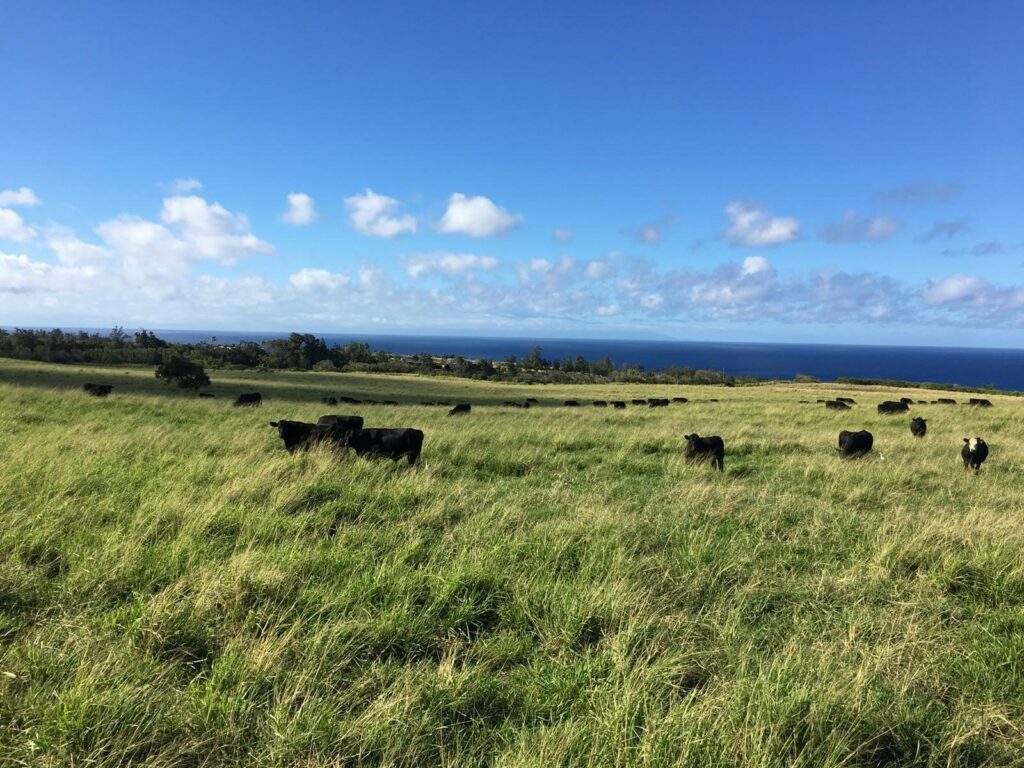Role of Animal Health in Environmental Health
Farmers and ranchers are truly the original stewards of the environment. Whether growing crops or raising livestock, aqua or poultry, they are committed to taking care of the natural resources gifted to them to produce food and to hand down that gift to their children, and their children’s children. It’s about producing safe, wholesome food sustainably and being able to do so for generations to come.
While sustainability may seem like a relatively new term to many, it’s something farmers and ranchers have been focused on for centuries. They continually look to new research and innovation to do things better each day. This includes climate-controlled barns to protect animals from extreme weather, advanced nutrition to promote overall animal health, rotational grazing and planting vegetation along rivers and waterways to both prevent runoff and foster wildlife habitat, GPS satellite guidance to precisely apply crop protection products only where needed, and no-till practices to keep vital nutrients in the soil – to name a few.
Animals and Sustainable Production
Keeping animals healthy is a big part of the sustainability equation.
Consider first the circular nature of the farm. Many farmers raising livestock also grow crops, like corn and soybeans, which are used to feed the animals, whose manure can be responsibly used as part of a manure management plan to fertilize the crops. And so it goes – in a continuous, sustainable cycle.
More livestock farmers are investing in technology like anaerobic digesters that turn livestock manure into fuel, power for the surrounding communities and odorless fertilizer for fields.
What farmers feed livestock can reduce food waste. The pulp from orange juice is just one example. If it weren’t for cows, the leftover citrus pulp would likely end up in our landfills. Other byproducts used to feed livestock are sugar beet pulp, wheat bran remains and palm kernel meal. In addition, foods that are imperfect or in surplus are also fed to livestock, such as potatoes, chocolate, breads, cookies, breakfast cereals and even potato chips.
What’s considered waste for human food can often become a delicious part of a balanced diet for livestock.
Animal Agriculture and Climate Change
There’s a lot of conversation today about animal agriculture and its contribution to climate change. The reality is the carbon footprint of animal agriculture is relatively small compared to other sectors of the economy.
The EPA estimates that transportation, power production and industry emit a combined 76 percent of all GHGs in the U.S., while agriculture contributes approximately 11% of the total U.S. emissions. The dairy industry contributes approximately two percent, the beef industry approximately three percent and pork approximately less than one-third of one percent.
According to one of the foremost experts on environmental impacts of meat and milk production, Frank Mitloehner, Ph.D., professor and air quality specialist in the Department of Animal Science at the University of California, Davis, reducing methane emissions from cattle while keeping cattle population steady can actually contribute to global cooling.
Consider dairy’s sustainability success story. Over the past seven decades, the industry has reduced land use by 90 percent, feed use by 77 percent and water use by 65 percent for each glass of milk produced. We can all drink to that!
By implementing science-based practices and advancements in agriculture technology, the pork industry has made major improvements. As compared to the 1960s, pig farmers today: use 76% less land, use 25% less water, have reduced their carbon footprint by almost 8% and have reduced energy use by 7%. U.S. citizens would have to quit using refrigerators and take 90 fewer showers per year to make similar environmental impacts.
Continuous Improvement
Even though the footprint of animal agriculture is relatively small, it doesn’t mean we can’t do better. We can – and we do. Here are some other examples of how animal agriculture is making improvements:
- Better animal health Reducing stress and disease helps animals stay healthy and decreases mortality.
- Improved genetics Selecting and breeding animals for feed efficiency, good fertility and improved health has a positive impact on the environment.
- Increased animal productivity Thanks to high standards in animal care and genetic improvements, today’s animals produce more meat, milk and eggs per animal. In other words, fewer animals are needed to produce the same amount of food, which translates to a lower carbon footprint.
- Dietary supplements and feed additives A variety of dietary supplements and feed alternatives are being trialed to assess whether they can reduce methane emissions from livestock. Supplements being considered include oils, fats, probiotics, nitrates, enzymes, marine algae and plant extracts. Other additives can reduce the number of bacteria that produce methane in the rumen (the largest stomach chamber of ruminant animals such as cattle, sheep and goats).
- Proper storage and handling of manure How farmers today store, apply and dispose of manure not only reduces greenhouse gas emissions, but addresses air and water quality. Some technologies allow gases to be used for fuel and power generation.
- Improved on-farm energy efficiency Farmers today are incorporating more energy efficient technologies in barns, engines, tractors and the like, and are taking advantage of renewable energies like biomass, hydro, solar and wind power.
- Crop rotation Growing different types of crops (often fed to animals) on the same field in sequential seasons to reduce soil erosion, protect nutrients and increase soil fertility.
These efforts and more demonstrate the ongoing dedication of farmers and ranchers to animal health and environmental stewardship – continually innovating to ensure they’re being the best stewards of the livestock and natural resources entrusted to their care.
Providing meat, milk and eggs and doing so in a way that protects the land, air and water is simply who they are. It’s a sustainability story as old as farming itself – and one that will continue to unfold as part of a global effort to make planet earth better for all.
